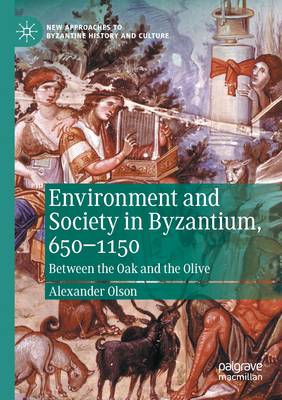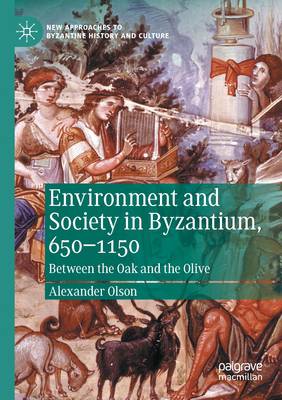
- Afhalen na 1 uur in een winkel met voorraad
- Gratis thuislevering in België vanaf € 30
- Ruim aanbod met 7 miljoen producten
- Afhalen na 1 uur in een winkel met voorraad
- Gratis thuislevering in België vanaf € 30
- Ruim aanbod met 7 miljoen producten
Zoeken
€ 126,95
+ 253 punten
Uitvoering
Omschrijving
1. Introduction
2. Middle Byzantium's Environmental and Economic Antecedents2.1 Taxes and Rents, Olives and Vines, Slaves and Cattle2.2 A Transformed Economy, Culture, and Environment2.3 An Elite-less Landscape?2.4 A New Equilibrium?
3. An Evergreen Empire3.1 Woodland Species Around the Aegean3.2 The Expansion of Woodland in the Aegean Littoral3.3 Contexts for Woodland Species' Success3.4 Using Woodland
4. The Decline of the Olive in Middle Byzantium4.1 What the Olive Tree Does and How People Work with it4.2 The Olive in the Ancient and Modern Contexts4.3 The Olive in Retreat4.4 Where did the Olives go?4.5 New Uses for an Old Object
5. Re-arranging Woods and Scrub5.1 Complicating the Landscape 5.2 Contexts for Altering the Landscape5.3 Deciduous Oak's Fortunes5.4 Chestnut's Fortunes5.5 Room to Maneuver
6. The Return of the Olive6.1 Where and When the Olive Returns 6.2 Monastic Assistance6.3 From Peasants to Merchants6.4 Olives from the Scrub
7. The Devil Chops Wood7.1 Social Causes and Outcomes of a Contested Countryside7.2 Hagiography and Conflict in the Landscape7.3 Hagiographical Strategies for a Contested Landscape
8. Conclusion
2. Middle Byzantium's Environmental and Economic Antecedents2.1 Taxes and Rents, Olives and Vines, Slaves and Cattle2.2 A Transformed Economy, Culture, and Environment2.3 An Elite-less Landscape?2.4 A New Equilibrium?
3. An Evergreen Empire3.1 Woodland Species Around the Aegean3.2 The Expansion of Woodland in the Aegean Littoral3.3 Contexts for Woodland Species' Success3.4 Using Woodland
4. The Decline of the Olive in Middle Byzantium4.1 What the Olive Tree Does and How People Work with it4.2 The Olive in the Ancient and Modern Contexts4.3 The Olive in Retreat4.4 Where did the Olives go?4.5 New Uses for an Old Object
5. Re-arranging Woods and Scrub5.1 Complicating the Landscape 5.2 Contexts for Altering the Landscape5.3 Deciduous Oak's Fortunes5.4 Chestnut's Fortunes5.5 Room to Maneuver
6. The Return of the Olive6.1 Where and When the Olive Returns 6.2 Monastic Assistance6.3 From Peasants to Merchants6.4 Olives from the Scrub
7. The Devil Chops Wood7.1 Social Causes and Outcomes of a Contested Countryside7.2 Hagiography and Conflict in the Landscape7.3 Hagiographical Strategies for a Contested Landscape
8. Conclusion
Specificaties
Betrokkenen
- Auteur(s):
- Uitgeverij:
Inhoud
- Aantal bladzijden:
- 258
- Taal:
- Engels
- Reeks:
Eigenschappen
- Productcode (EAN):
- 9783030599386
- Verschijningsdatum:
- 17/11/2021
- Uitvoering:
- Paperback
- Formaat:
- Trade paperback (VS)
- Afmetingen:
- 148 mm x 210 mm
- Gewicht:
- 358 g

Alleen bij Standaard Boekhandel
+ 253 punten op je klantenkaart van Standaard Boekhandel
Beoordelingen
We publiceren alleen reviews die voldoen aan de voorwaarden voor reviews. Bekijk onze voorwaarden voor reviews.











